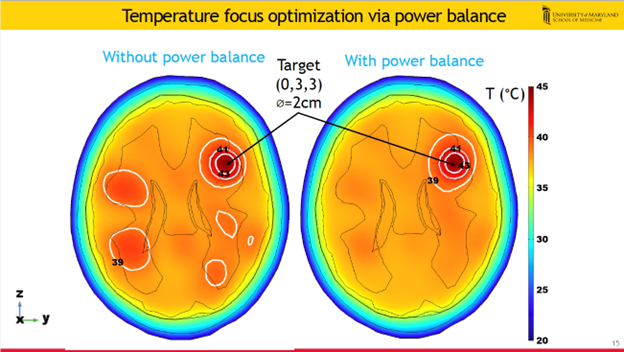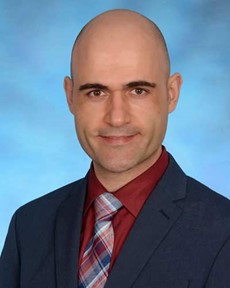 At the COMSOL Conference held in Boston recently, the turns to brain cancer. Not what you were expecting: a talk about cancer at a conference for simulation software users? Get used to it. It’s day 3. I have learned it is called COMSOL Multiphysics for a reason. The physics spans multiple disciplines, including medicine. Day 1, I learned how a medicine in a pre-filled syringe can jam and now this … hyperthermic treatment (HT) of brain tumors.
At the COMSOL Conference held in Boston recently, the turns to brain cancer. Not what you were expecting: a talk about cancer at a conference for simulation software users? Get used to it. It’s day 3. I have learned it is called COMSOL Multiphysics for a reason. The physics spans multiple disciplines, including medicine. Day 1, I learned how a medicine in a pre-filled syringe can jam and now this … hyperthermic treatment (HT) of brain tumors.
However, on the main stage is Dr. Dario Rodrigues, a medical researcher from the University of Maryland in Baltimore. 
How Does Hyperthermia Work?
Hyperthermia is derived from the Greek terms υπέρ/ypér, meaning “above, “more,” or “over,” and θερμός/thermós meaning “hot.” Hyperthermia therapy (HT) is most often used to describe the therapeutic technique of induced temperature increase through thermal energy delivery. – National Library of Medicine
Hyperthermia creates a hotspot in the brain that is 44 to 44° C for varying periods. Microwaves, RF, lasers can supply the energy…it doesn’t matter. The important thing is that the beams focus the energy on a small volume, so it only affects where it is aimed and not damage healthy tissues nearby.
The physics of energy penetration means that hyperthermic treatments are most common close to the surface, like skin cancer. Several clinics have opened to do this. However, the University of Maryland, where Dr. Rodrigues works, is able to work in deep-seated tumors, such as cervical, prostate, bladder and rectal cancer.
Hyperthermia can be used in conjunction with other treatments: surgery, immunotherapy, chemotherapy and radiation. In fact, one study found that if hyperthermia is used with radiation therapy, patients can have up to 5x better outcomes, which doctors define as being 2 years cancer-free.
Combined with surgery, hyperthermia will have an even better outcome – so long as the surgery is done immediately. Don’t wait a month, he says.
The surgeon “scoops out the tumor,” then the patient has to wait 30 days for hyperthermia treatment. Surgery will get most of the cancer cells but leave nearby cells unharmed. Thirty days late those cells have moved on — as much as centimeters away, explains the doctor.
Microwaves, which stimulate the water molecule, causing the lone oxygen atom to flip back and forth, generating heat, are perhaps the best energy source to use. HT microwaves are either 915 Mhz or 433 Mhz, the lower wavelength for going deeper under the surface.
The deadliest for form of brain cancer, glioblastoma, was removed successfully with hyperthermia 31% of the time, compared to a mere 15% of the time with surgery, according to a study, says the doctor.
COMSOL to the Rescue
The SAR radiation model is created with COMSOL Multiphysics and models the skin, fat, skull, spinal fluid and brain tissue.“ The interaction of fluid, solids, and electromagnetics make this truly multiphysics. Therefore, Dr. Rodrigues finds COMSOL indispensable to his research.
Dr. Rodrigues uses COMSOL to model the brain undergoing HT to predict the efficacy of HT devices under development. By varying the number of amplifiers, antennas and placement on a device worn around the head can be simulated. The cancer-killing hotspot shows up in red. He also likes that COMSOL’s visualization will let him customize the color mapping.
“Won’t it also help with how hyperthermia could increase the permeability of the blood-brain barrier?” asks an audience member.
Dr. Rodrigues: Someone on the staff is looking into that.
“COMSOL is wonderful for these studies,” says the doctor.
